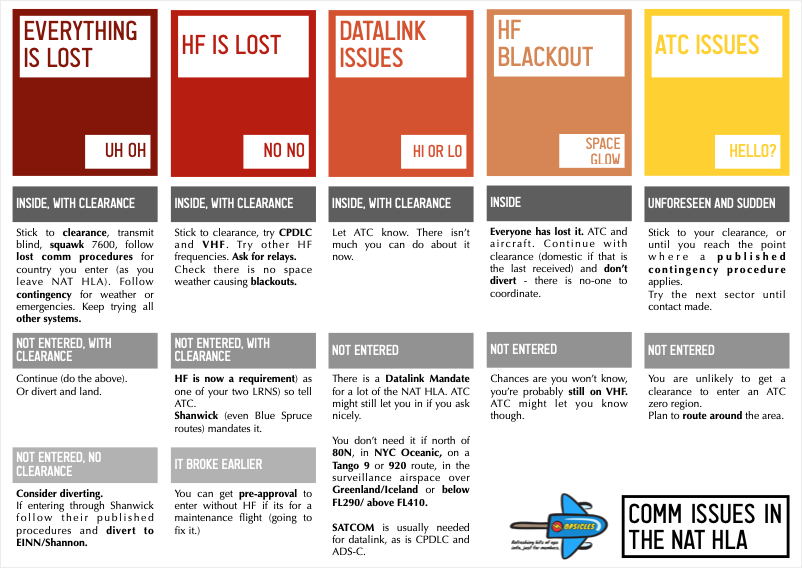An OPSGROUP member recently reported they experienced extended interference on Santa Maria Radio (HF frequency 11309). They were unable to use it for nearly ten minutes due to a continuous broadcast in a foreign language.
This was reported directly to Nav Portugal, and the member was kind enough to share their response with the group. Here is what they had to say.
Unknown Broadcasts
The Radio Supervisor did report significant voice interference on the same day for a period of nearly twenty minutes. It didn’t coincide with the time the member’s aircraft was inside the Santa Maria FIR, but they were quick to point out this may mean it hadn’t been reported yet.
In other words, this is likely not an isolated issue.
Nav Portugal advised that in the past twenty-four months, they’ve observed increasing levels of interference on the HF frequencies assigned by Santa Maria. These are often caused by voice transmissions, but have also included radar signals – essentially ‘pinging.’
These have been confirmed to originate from Eastern Europe, and the Middle East.
There is no evidence the broadcasts are malicious
While they seem to emanate from regions of high political tension, there are no indications the broadcasts are an attempt to impede the communication of air traffic.
They are simply an inconvenience. Nevertheless, they are occurring in one of the largest FIRs on the planet serving hundreds of flights per day, a number of NAT tracks, and traffic in and out of the Azores.
So, it is important to know what to do if you encounter this on your next crossing.
I don’t care, I have CPDLC
It’s true that CPDLC services are available to all FANS 1/A equipped aircraft in the Santa Maria FIR (logon LPPO).
But look out for this chestnut, from Santa Maria themselves…
…attention is called to flight crew that the use of data link services do not exempt the requirement of establishing voice communications with Santa Maria Radio at or before the FIR Boundary, whether on HF or VHF, even if a CPDLC connection is established…
So HF interference begins to matter for everyone, when outside of VHF coverage.
Try the other line
Your next option is the ol’ sat phone.
Santa Maria’s contact information is listed in NAT Doc 003, but to save you some time, their Inmarsat short code is 426305, and the direct dial for the supervisor is +351 296 820 401.
There are also alternative HF frequencies listed in the attached document. As a general rule, lower frequencies work better at night, and higher during the day.

If ionospheric propagation floats your boat, we’re not here to judge. You can read more about it here.
Phone a Friend
If you’re not satvoice equipped, and you can’t reach Santa Maria Radio directly – what then?
In the first instance, attempt to raise a nearby aircraft on 121.5 or 123.45 who can relay your position report for you.
Or you can try and contact adjacent ATC oceanic sectors – namely Shanwick, Gander, New York Oceanic or Piarco. Nearby radar units may also be able to assist too – Lisboa, Canarias, Sal or Madrid Controls.
Failing that, you’re into the lost comms procedure. You can find that here.
Here’s a quick sheet the team previously put together…
Keep Reporting
If you encounter HF frequency interference, it is important that you report it. The more detail the better – including the UTC time, position, altitude, duration and any other identifying details. It’s likely you’re not the only one who will encounter the problem.
We’d also love to hear from you too – you can reach us on team@ops.group
More on the topic:
- More: NAT Crossing after GPS spoofing: a guide
- More: NAT Doc 007 – New Edition
- More: Don’t Climb! A Big NAT No-No
- More: Oceanic Clearance Removal mess – Version 4!
- More: NAT Clearance changes – a game! (V4)
More reading:
- Latest: Teterboro: RIP the RUUDY SIX
- Latest: 400% increase in GPS Spoofing; Workgroup established
- Latest: GPS Spoofing WorkGroup 2024
- Safe Airspace: Risk Database
- Weekly Ops Bulletin: Subscribe
- Membership plans: Why join OPSGROUP?












 Get the famous weekly
Get the famous weekly 





